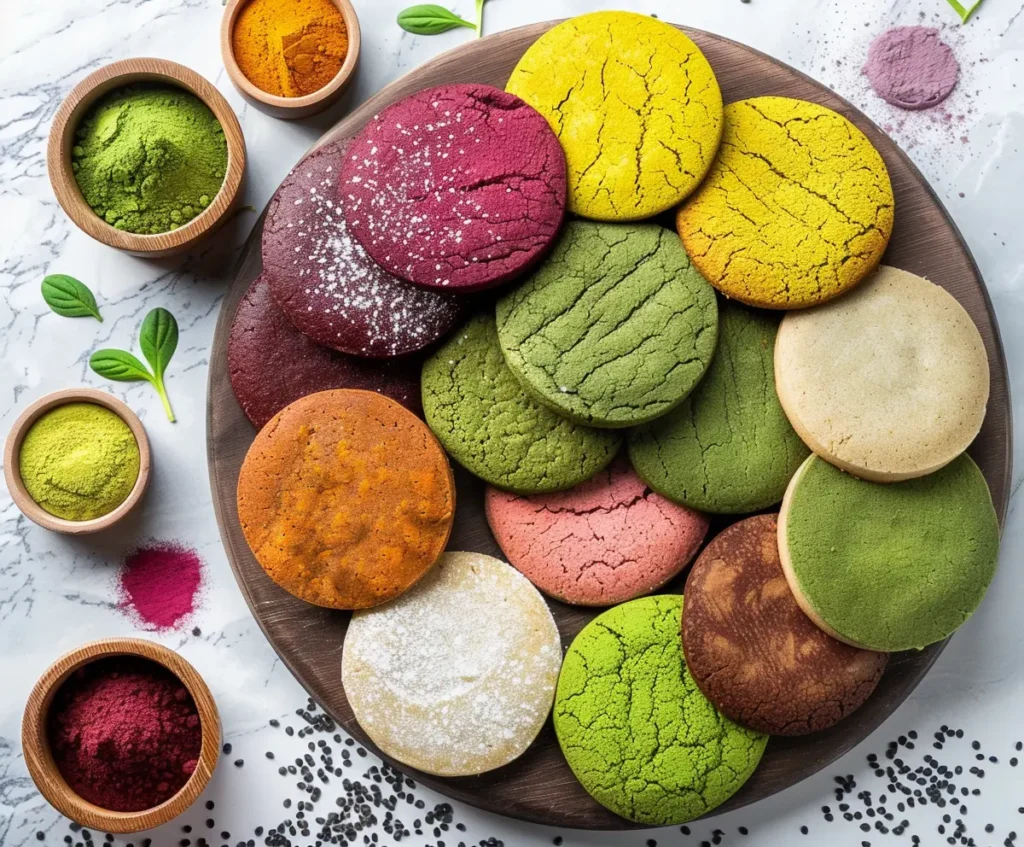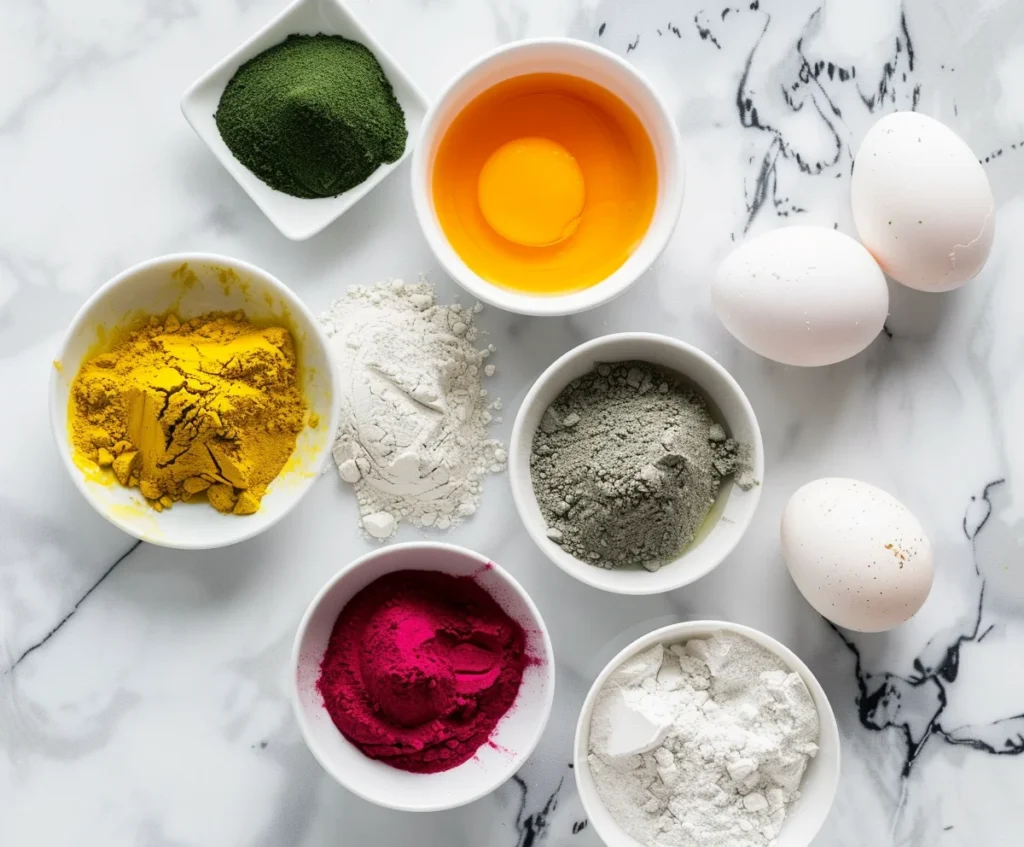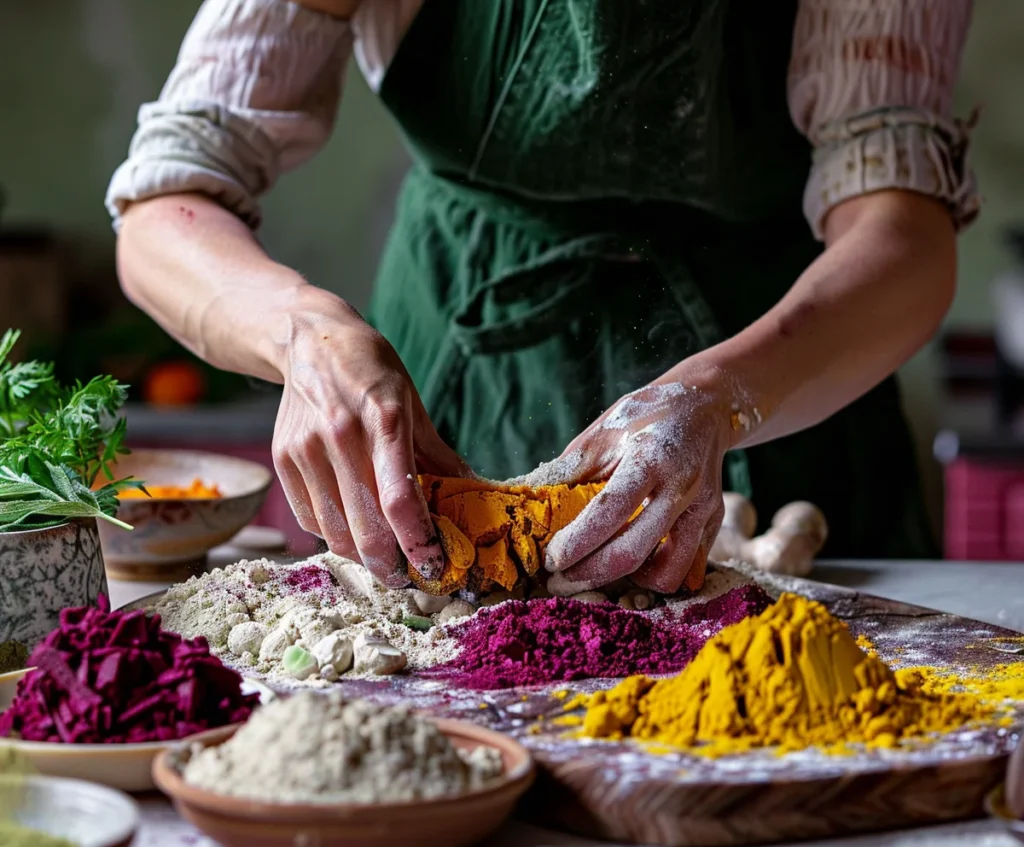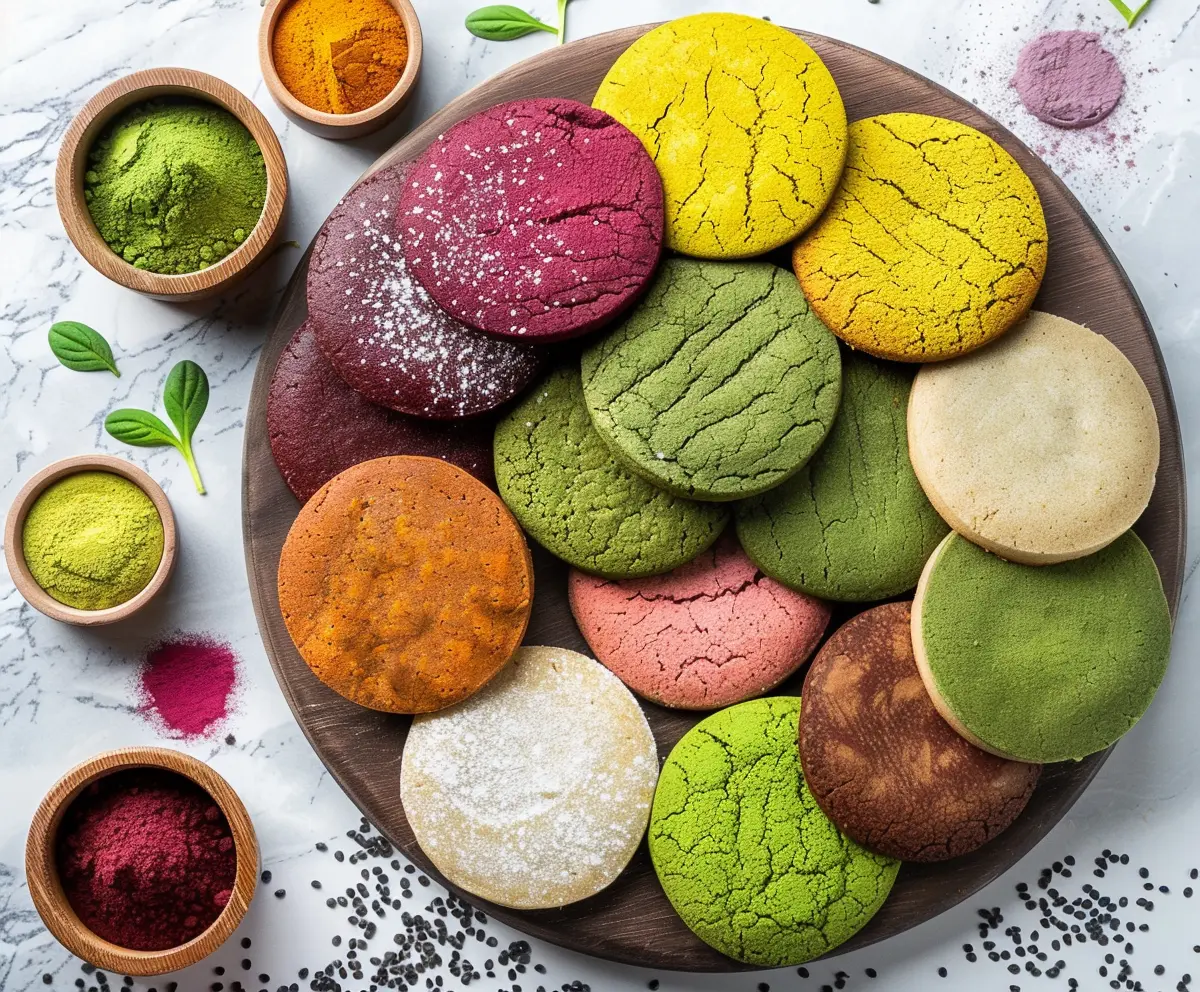
Cookies are more than just a sweet treat—they’re an opportunity to get creative in the kitchen. Adding colorful ingredients to cookie recipes not only enhances their visual appeal but also makes them perfect for festive celebrations, family gatherings, or simply brightening someone’s day. Vibrant cookies are a favorite among children and adults alike, often stealing the spotlight on dessert tables and social media feeds.
From natural hues like green matcha or red beetroot powder to playful options like rainbow sprinkles and mini M&Ms, the possibilities for making cookies more colorful are endless. Whether you’re aiming for a subtle pastel tone or bold and bright hues, the right ingredients and techniques can turn ordinary cookies into edible works of art.
This guide explores everything you need to know about using colorful ingredients in cookie recipes. Learn about natural and artificial options, tips for preserving color during baking, creative recipe ideas, and troubleshooting common challenges. Whether you’re a baking novice or a seasoned pro, these tips and tricks will inspire you to experiment and create cookies that are as delightful to look at as they are to eat. Get ready to make your cookies shine with color and charm!
Why Use Colorful Ingredients in Cookies?
Adding colorful ingredients to cookie recipes is more than just a visual upgrade—it’s a way to make your baking stand out. Here’s why colorful cookies are a hit:
- Aesthetic Appeal: Brightly colored cookies are eye-catching and add a pop of fun to any dessert spread. Whether you’re baking for a party, a gift, or simply to share with friends, colorful cookies are sure to grab attention.
- Festive Vibes: Colorful cookies are a natural fit for holidays and celebrations. From red and green Christmas cookies to pastel shades for Easter or rainbow hues for Pride Month, there’s a theme for every occasion.
- Appealing to Kids: Vibrant cookies are especially loved by children, making them a hit at birthday parties and school events. The playful colors can spark their imagination and excitement.
- Social Media Ready: With social platforms flooded with food photos, colorful cookies offer a great way to showcase your creativity. A plate of brightly colored cookies is sure to earn likes and shares.
Incorporating colors into cookies not only makes them visually stunning but also adds an element of joy and excitement, making every bite feel like a celebration.
Table of Contents
Popular Colorful Ingredients for Cookies
Selecting the right colorful ingredients is essential to making cookies that are visually stunning and delicious. Here’s a look at the most popular options to bring vibrancy to your baked goods:
Natural Coloring Options
For bakers who prefer natural alternatives, these ingredients provide bright hues and subtle, complementary flavors:
- Matcha Powder: Adds a deep green color and a rich, earthy flavor. Perfect for elegant or nature-inspired cookies.
- Beetroot Powder: Offers a reddish-pink shade with a touch of natural sweetness, ideal for Valentine’s Day or festive themes.
- Turmeric: Creates a golden-yellow tone, great for autumn cookies or sunshine-themed treats.
- Spirulina: This nutrient-packed superfood provides a soft blue-green color, ideal for health-conscious bakers.

Artificial Colors and Fun Candies
When bold and consistent colors are the goal, artificial ingredients and candies are reliable options:
- Gel-Based Food Coloring: Known for its vibrant pigmentation and heat resistance, it’s perfect for intense tones.
- Rainbow Sprinkles: A classic choice for adding instant festivity and fun to cookies.
- Mini M&Ms: These colorful candies bring both a splash of color and a delightful crunch.
Edible Inclusions
For a combination of color, texture, and flavor, try these edible add-ins:
- Freeze-Dried Fruits: Add natural pops of color with strawberries, raspberries, or blueberries.
- Colored Chocolate Chips: Ruby or pastel-colored white chocolate chips create a unique visual appeal.
- Dried Cranberries and Apricots: These ingredients provide chewy textures and vibrant red or orange tones.
Whether you lean toward natural hues or playful artificial tones, these colorful ingredients can turn any batch of cookies into show-stopping edible masterpieces. With countless possibilities, your creativity is the only boundary!
Techniques for Using colorful ingredients in cookie recipes
Creating visually stunning cookies with colorful ingredients requires the right techniques to ensure the colors stay vibrant and beautiful during the baking process. Here are some tried-and-true tips to achieve perfect results:

1. Use Gel-Based Food Coloring
- Gel-based colors are more concentrated than liquid options, offering intense pigmentation without affecting the dough’s consistency.
- Start with a small amount and gradually add more until you reach your desired shade.
2. Chill the Dough
- Chilling the dough before baking helps preserve the intensity of the colors and prevents them from bleeding.
- Refrigerate for at least 30 minutes to ensure the colors remain vibrant.
3. Divide and Color Dough
- To create multi-colored cookies, divide the dough into separate portions and tint each with a different color.
- Use gloves to avoid staining your hands during the mixing process.
4. Avoid Overmixing
- Overmixing the dough after adding color can dull the hues and alter the texture.
- Mix just enough to evenly distribute the color.
5. Experiment with Layers and Swirls
- For layered cookies, press colored doughs together to create stripes.
- To achieve a marbled effect, gently swirl different colored doughs together without overmixing.
Using these techniques ensures that your cookies are not only colorful but also retain their vibrant appeal throughout the baking process. With a little creativity, you can turn your cookies into edible works of art.
Creative Cookie Recipe Ideas Using Colorful Ingredients
Unleash your creativity in the kitchen with these fun and visually stunning cookie ideas. Whether for a festive gathering or a playful treat, these recipes will brighten any occasion.
1. Rainbow Layer Cookies
- Create bold, layered cookies by stacking dough tinted with various colors.
- Use almond paste or jam between layers for added flavor and texture.
- Perfect for parties or as a colorful surprise in lunchboxes.
2. Tie-Dye Swirl Cookies
- Divide dough into multiple portions, tint each with a different color, and roll them together.
- Gently swirl the dough to create a marbled or tie-dye effect before baking.
- Ideal for a groovy, eye-catching design.
3. Funfetti Sugar Cookies
- Mix rainbow sprinkles directly into sugar cookie dough for a playful, confetti-like look.
- A hit at birthdays and celebrations, especially with children.
4. Unicorn-Inspired Cookies
- Use pastel-colored dough and shape into stars, hearts, or whimsical designs.
- Add edible glitter or pearl sprinkles for a magical finishing touch.
5. Holiday-Themed Cookies
- Celebrate seasonal festivities by using themed colors, such as red and green for Christmas or orange and black for Halloween.
- Pair with shaped cookie cutters for an extra festive touch.
These creative recipes offer endless possibilities for turning simple cookie dough into vibrant treats that steal the spotlight at any event. Let your imagination run wild and experiment with colorful ingredients to make cookies that are as fun to make as they are to eat.
Health Considerations and Substitutes for Colorful Ingredients
Adding colorful ingredients to cookies doesn’t mean compromising on health. With a few smart choices, you can create vibrant cookies that cater to various dietary needs and preferences.
1. Choose Natural Coloring Alternatives
- Opt for plant-based powders like matcha, beetroot powder, or spirulina for vibrant hues without artificial additives.
- Use freeze-dried fruit for naturally colorful and nutrient-rich options.
2. Gluten-Free and Vegan Options
- Replace all-purpose flour with almond or oat flour for gluten-free cookies.
- Use dairy-free butter and egg substitutes like flaxseed meal or aquafaba to cater to vegan diets.
3. Reduce Sugar Content
- Incorporate naturally sweet ingredients like dried fruits (e.g., cranberries, raisins) to add color and sweetness.
- Use sugar alternatives such as stevia or monk fruit sweeteners for low-sugar cookies.
4. Avoid Allergens
- Choose hypoallergenic ingredients to ensure the cookies are safe for all, particularly children. For example:
- Use allergen-free food colors.
- Replace nuts with seeds like sunflower or pumpkin seeds if needed.
By focusing on healthier options, you can bake cookies that are visually stunning, delicious, and mindful of diverse dietary preferences. These substitutes allow you to enjoy colorful cookies without guilt or restrictions, making them suitable for everyone at the table.
Troubleshooting Common Issues with Colorful Cookies
Even with the Even with the best intentions, baking cookies with colorful ingredients can sometimes lead to unexpected results. Here’s a guide to tackling the most common problems so your cookies turn out as vibrant and tasty as you imagined:
1. Fading Colors
- Problem: Colors appear dull or lose their vibrancy after baking.
- Solution: Use heat-resistant, gel-based food colors, which hold up better under high temperatures. Chill the dough before baking to help preserve the colors.
2. Bleeding Color
- Problem: Colors blend together or run, creating an unintended look.
- Solution: Avoid overmixing the dough after adding food coloring. Chill the dough thoroughly before shaping and handle it as little as possible to maintain sharp, clean colors.
3. Uneven Coloring
- Problem: Some parts of the dough appear more vibrant than others.
- Solution: Ensure the food coloring is evenly distributed. Use gloves to mix by hand or a stand mixer for even blending.
4. Overly Soft Dough
- Problem: Dough becomes sticky or difficult to work with after adding color.
- Solution: Add a small amount of flour to bring the dough back to a workable consistency without altering its structure or flavor.
5. Colors Dulling After Mixing
- Problem: Colors lose intensity during mixing.
- Solution: Gradually add food coloring and stop mixing as soon as the color is distributed evenly. Overmixing can incorporate too much air, dulling the color.
By addressing these common issues, you’ll achieve cookies that are not only delicious but also visually stunning. Troubleshooting ensures that your colorful cookies pop with vibrancy and stay true to your creative designs!
FAQs: Colorful Ingredients in Cookies
How do you add color to cookies?
To add color to cookies, you can use gel food coloring, liquid food coloring, or natural ingredients like beet powder, matcha, or turmeric. Gel food coloring works best as it provides vibrant colors without altering the dough’s texture. If using liquid food coloring, add a few drops at a time to avoid making the dough too wet. For a fun twist, try rolling cookies in colored sugar or sprinkles before baking.
What are the 7 basic ingredients in all cookies?
Most cookie recipes include seven essential ingredients:
Vanilla Extract or Flavoring – Adds depth and aroma to the cookies.
Flour – Provides structure and texture.
Sugar – Adds sweetness and helps with browning.
Butter or Fat – Creates tenderness and richness.
Eggs – Bind the ingredients together and add moisture.
Baking Soda or Baking Powder – Acts as a leavening agent for a light texture.
Salt – Enhances flavor and balances sweetness.
What is the name of colorful cookies?
Colorful cookies go by many names, depending on the style and region. Some popular ones include:
Tie-Dye or Marbled Cookies – Swirled dough creating a colorful, artistic effect.
Rainbow Cookies – Multicolored layered cookies, often made with almond paste.
Sprinkle Cookies – Sugar cookies coated in colorful sprinkles.
Funfetti Cookies – Sugar cookies mixed with rainbow sprinkles for a confetti-like effect.
Macarons – Delicate French cookies that come in a variety of bright colors.
How to make colored cookie dough?
To make colored cookie dough, follow these simple steps:
Prepare your cookie dough using a standard sugar cookie or butter cookie recipe.
Add gel food coloring to the dough before chilling. Use a small amount at first and knead it in until fully incorporated.
For multiple colors, divide the dough into portions and mix a different color into each.
Chill the dough for at least 30 minutes before rolling or shaping to maintain its structure.
Shape, bake, and enjoy! You can also marble different colors together for a tie-dye effect.
Conclusion
Adding colorful ingredients in cookie recipes turns cookies into more than just a snack—they become edible art. Using options like matcha powder, beetroot powder, or fun additions like rainbow sprinkles and mini M&Ms, you can create cookies that look as amazing as they taste.
By following simple techniques, such as using gel-based colors, chilling dough, and layering or swirling colors, your cookies will bake beautifully and stay vibrant. For more creative ideas, explore our guide to unicorn cake, which shows how bright colors can make desserts even more exciting.
If you have dietary needs, natural dyes, gluten-free flours, and sugar-free choices allow you to enjoy colorful ingredients in cookie recipes without worries. You can also pair your cookies with other treats like our apple pecan Danish pastry tart for a fun and colorful dessert table.
From holiday treats to fun party snacks, cookies made with colorful ingredients in cookie recipes bring happiness to any occasion. With the tips in this guide, you can make cookies that everyone will love. Let your creativity shine, and bake cookies that are as beautiful as they are tasty!see as they are to eat!

Colorful Sugar Cookies
Equipment
- Mixing bowls
- Whisk
- Hand mixer or stand mixer
- Measuring cups and spoons
- Silicone spatula
- Baking sheet
- Parchment paper or silicone baking mat
- Cookie scoop or spoon
Ingredients
- 2 ½ cups all-purpose flour
- 1 cup unsalted butter softened
- 1 cup granulated sugar
- 1 large egg
- 1 teaspoon vanilla extract
- ½ teaspoon baking powder
- ¼ teaspoon salt
- Gel food coloring red, blue, green, yellow, or preferred colors
- Sprinkles optional, for extra color and texture
Instructions
1️⃣ Preheat & Prepare
- Preheat the oven to 350°F (175°C).
- Line a baking sheet with parchment paper or a silicone baking mat.
2️⃣ Mix Wet Ingredients
- In a large bowl, cream together the butter and sugar until light and fluffy.
- Add the egg and vanilla extract, mixing until fully combined.
3️⃣ Combine Dry Ingredients
- In a separate bowl, whisk together the flour, baking powder, and salt.
- Gradually add the dry ingredients to the wet ingredients, mixing until a dough forms.
4️⃣ Add Color to Dough
- Divide the dough into separate portions.
- Add a few drops of gel food coloring to each portion and knead until the color is evenly distributed.
- For a tie-dye effect, gently swirl different colored dough portions together.
5️⃣ Shape & Bake
- Roll the dough into small balls and place them on the prepared baking sheet.
- Lightly flatten each cookie with your hand or the bottom of a glass.
- Bake for 10-12 minutes, or until the edges are lightly golden.
6️⃣ Cool & Serve
- Let the cookies cool on the baking sheet for 5 minutes, then transfer to a cooling rack.
- Serve as-is or decorate with sprinkles, icing, or edible glitter for extra color!
Notes
- For Natural Coloring: Use beet powder for red, matcha for green, turmeric for yellow, and butterfly pea powder for blue instead of artificial food coloring.
- Avoid Overmixing: Overmixing the dough can lead to dense cookies—mix just until combined.
- Color Intensity: Gel food coloring provides vibrant colors without altering dough consistency; liquid food coloring may require extra flour.
- Storing Cookies: Store in an airtight container at room temperature for up to 5 days or freeze for up to 3 months.
- Dough Chilling Tip: If your dough is too soft, chill for 30 minutes before shaping to prevent spreading.
- For a Marbled Effect: Lightly knead different colored doughs together instead of fully mixing.
